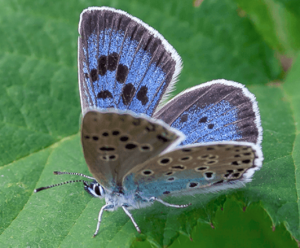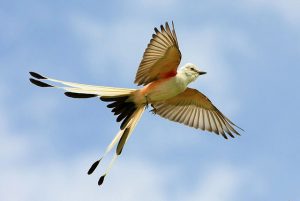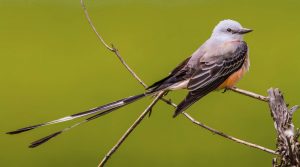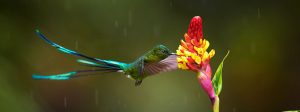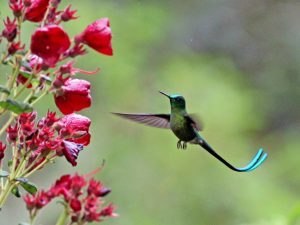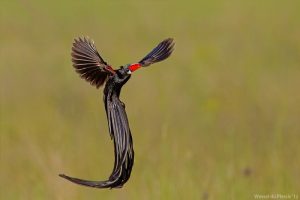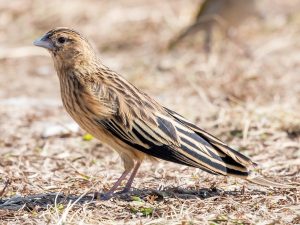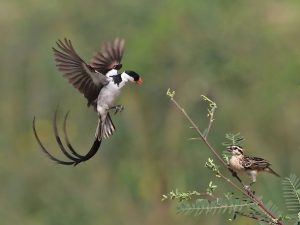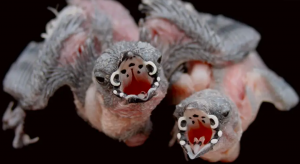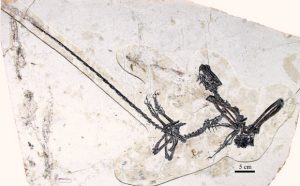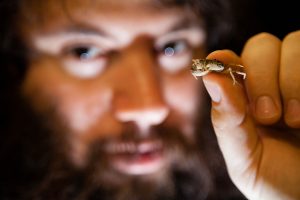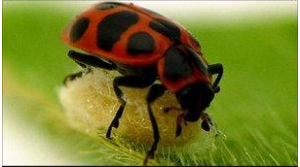Podcast: Play in new window | Download (Duration: 9:18 — 10.5MB)
Thanks to Tim and Mia who suggested one of this week’s animals!
Further reading:
Genomic insights into the evolutionary origin of Myxozoa within Cnidaria
A tardigrade, photo taken with an electron microscope because these little guys are incredibly tiny:
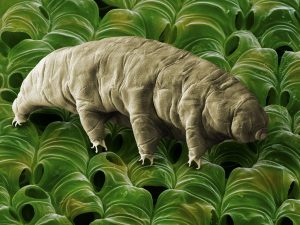
Show transcript:
Welcome to Strange Animals Podcast. I’m your host, Kate Shaw.
This week we’re going to talk about two microscopic or almost microscopic animals, one suggested by Mia and Tim, the other one I just learned about myself.
We’ll start with Mia and Tim’s suggestion, the water bear, also known as the tardigrade. We’ve talked about it before but there’s always more to learn about an animal.
The water bear isn’t a bear at all but a tiny eight-legged animal that barely ever grows larger than 1.5 millimeters. Some species are microscopic. There are about 1,300 known species of water bear and they all look pretty similar. It looks for all the world like a plump eight-legged stuffed animal made out of couch upholstery. It uses six of its fat little legs for walking and the hind two to cling to the moss and other plant material where it lives. Each leg has four to eight long hooked claws. It has a tubular mouth that looks a little like a pig’s snout.
An extremophile is an organism adapted to live in a particular environment that’s considered extreme, like undersea volcanic vents or inside rocks deep below the ocean floor. Tardigrades aren’t technically extremophiles, but they are incredibly tough. Researchers have found tardigrades in environments such as the gloppy ooze at the bottom of the ocean and the icy peaks of the Himalayas. It can survive massive amounts of radiation, dehydration for up to five years, pressures even more intense than at the bottom of the Mariana Trench, temperatures as low as -450 Fahrenheit, or -270 Celsius, heat up to 300 degrees Fahrenheit, or 150 Celsius, and even outer space. It’s survived on Earth for at least half a billion years. Mostly, though, it just lives in moss.
Not every tardigrade is able to do everything we just talked about. They’re tough, but they’re not invulnerable, and different species of tardigrade are good at withstanding different extreme environments. Many species can withstand incredible heat, but only for half an hour or less. Long-term temperature increases, even if only a little warmer than what it’s used to, can cause the tardigrade to die.
Most species of tardigrade eat plant material or bacteria, but a few eat smaller species of tardigrade. It has no lungs since it just absorbs air directly into its body by gas exchange. It has a teeny brain, teeny eyes, and teeny sensory bristles on its body. Its legs have no joints. Its tubular mouth contains tube-like structures called stylets that are secreted from glands on either side of the mouth. Every time the tardigrade molts its cuticle, or body covering, it loses the stylets too and has to regrow them. In some species, the only time the tardigrade poops is when it molts. The poop is left behind in the molted cuticle.
The tardigrade’s success is largely due to its ability to suspend its metabolism, during which time the water in its body is replaced with a type of protein that protects its cells from damage. It retracts its legs and rearranges its internal organs so it can curl up into a teeny barrel shape, at which point it’s called a tun. It needs a moist environment, and if its environment dries out too much, the water bear will automatically go into this suspended state, called cryptobiosis.
Tests in 2007 and 2011 that exposed tardigrades to outer space led to some speculation that tardigrades might actually be from outer space, and that they, or organisms that gave rise to them, might have hitched a ride on a comet or some other heavenly body and ended up on earth. But this isn’t actually the case, since genetic studies show that tardigrades fit neatly into what we know of animal development and evolution. In other words, tardigrades are weird, but they’re Earth weird.
Our other tiny animal today is one that lacks pretty much everything animals usually have. Myxozoa are parasites that can’t live outside of the host’s body, a condition called obligate parasitism. They’re found in both freshwater and ocean water animals but evolved from an animal similar to a jellyfish that would have just swum around happily in the ocean. Now they’re microscopic parasites with the smallest genomes of any animals studied. Most only measure 300 micrometers at most, or 1/3 of a millimeter, although the largest known grows a humongous 2 mm long.
Different myxozoa have different life cycles, some of them complex. Because they’re so small, we naturally don’t know that much about them, and there are undoubtedly a whole lot of species that haven’t been discovered by science. They’re so numerous, and so different from other animals, that they’ve been placed into their own subphylum, classified in the Phylum Cnidaria. Cnidarians include jellyfish, corals, sea anemones, and many other aquatic invertebrates that show radial symmetry–but not comb jellies which have their own phylum.
In general, this is how a myxozoan spreads to a new host. A myxozoan secretes tiny capsules called myxospores that contain polar filaments. The myxopores are eaten by worms, at which point the capsule opens and the polar filaments uncoil and attach to the worm’s gut, where it develops into a sporoplasm and eventually detaches from the worm. The sporoplasm floats around in the water until it touches a fish, especially a fish’s gills, at which point it digs into the fish’s body and continues to develop.
When scientists identified the first myxozoans, they were classified as protozoans, single-celled animals. Many protozoans are parasitic. But as genetic testing became more refined and easier to do, and some myxozoans had their DNA sequenced, it became obvious that they were something else. Scientists just weren’t sure what. Finally scientists realized that they were similar genetically to jellyfish and their close relations, although they estimate it’s been about 600 million years since they shared a common ancestor.
Many myxozoans no longer have genes that allow communication between cells, multicellular development, body coordination, or even respiration in some species. Most are only a few cells in size and the most complex cell is the one that contains what’s called a polar capsule. This probably developed from its ancestor’s nematocysts, which are the cells that sting you if you touch a jellyfish, which is why you should never touch a jellyfish no matter how pretty it is.
Most myxozoa infect fish, but they’ve also been discovered in other animals. This includes a few frogs, turtles, aquatic birds, and octopuses. But they’ve also been discovered in two mammals, both of them shrews. Even though we already know about more than 2,000 species of myxozoa, scientists think there are probably hundreds, if not thousands more, but no one’s noticed them yet because they’re so small.
If you remember the Dr. Seuss book Horton Hears a Who, consider that the Whos might have actually been tardigrades. But probably not myxozoa, which wouldn’t have been able to build a Who city.
You can find Strange Animals Podcast at strangeanimalspodcast.blubrry.net. That’s blueberry without any E’s. If you have questions, comments, or suggestions for future episodes, email us at strangeanimalspodcast@gmail.com. We also have a Patreon at patreon.com/strangeanimalspodcast if you’d like to support us for as little as one dollar a month and get monthly bonus episodes.
Thanks for listening!
